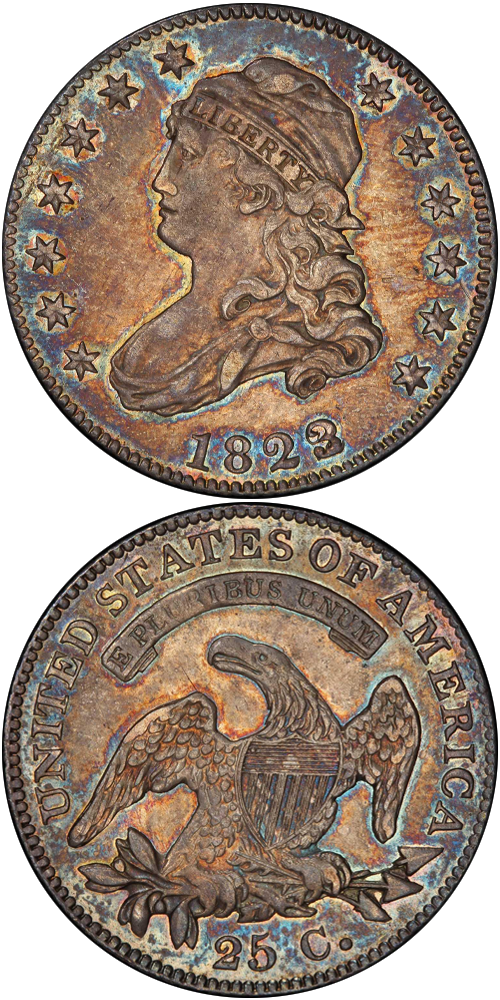1823/2 Capped Bust Quarter
The rarity of this date was already legendary by the time Montroville W. Dickeson wrote his 1859 American Numismatical Manual, where he pronounced this date “extremely rare.” Dickeson and his contemporaries did not understand that reported mintage figures may have reflected the year the coins were delivered, but not necessarily the dates on the dies that were used to make them. His Manual gave a mintage figure of 17,800 coins, which encompasses all coins delivered in the 1823 calendar year. Today, considering the rarity of this date, most scholars presume that almost the entire delivered mintage of 1823 was actually dated 1822. By most estimates, just 35 specimens of this rarity exist over the whole continuum of possible states of preservation, most quite worn, a few damaged, even one famously repaired to remove graffiti. As cited above, in 1883, Harold P. Newlin posited that the four rarest U.S. silver coins were the 1802 half dime, the quarters of 1823 (all of which are 1823/2) and 1827, and the 1804 dollar. The Pogue Collection had exceptional specimens of all of these. Few American rarities have been so lovingly documented as the 1823/2 quarter, so carefully studied for provenance and technical nuance, and so appreciatively collected by those able to purchase one.
Thirty-one discrete specimens have been documented, and a few more are assumed to exist in old-time collections or unexamined institutional holdings, yielding about 35. The Smithsonian Institution and the Durham Western Heritage Museum in Omaha both own well-worn specimens. A single Proof exists. More than half of the known survivors are in grades below Very Fine; just five are better than Extremely Fine.
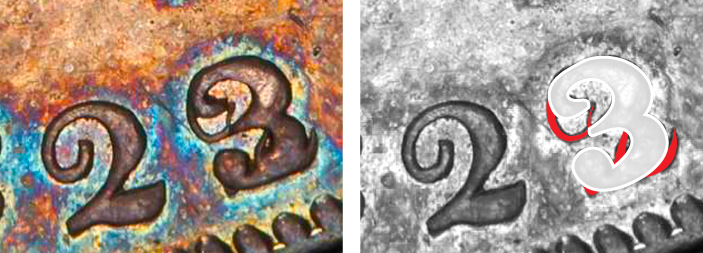
The example to the left was sold by Stack's Bowers Galleries in the D. Brent Pogue Part I Auction, where it realized $246,750.
1823/2 Capped Bust Quarter Auction Highlights
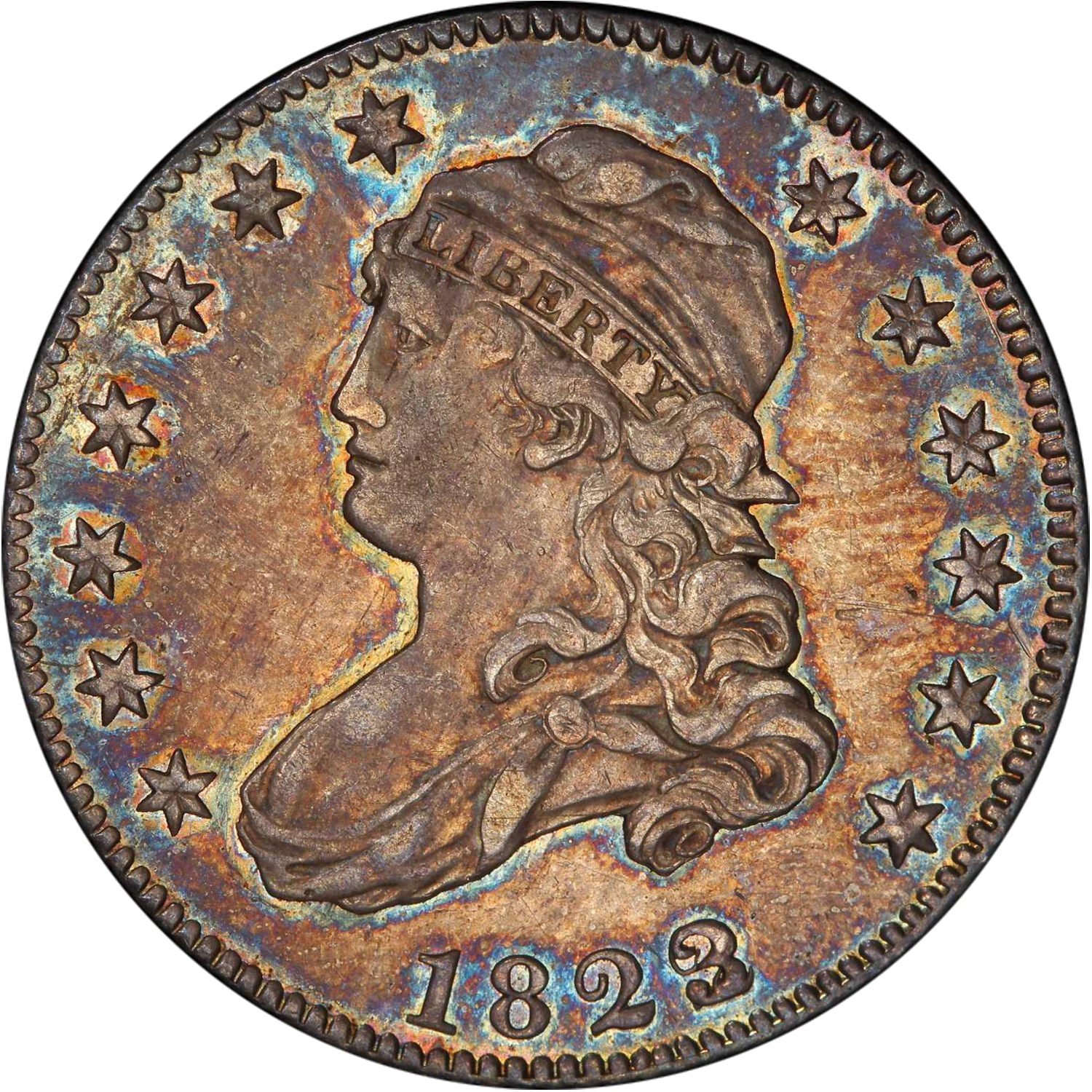 PCGS AU-58 Sold for $246,750 View Lot 1072 | 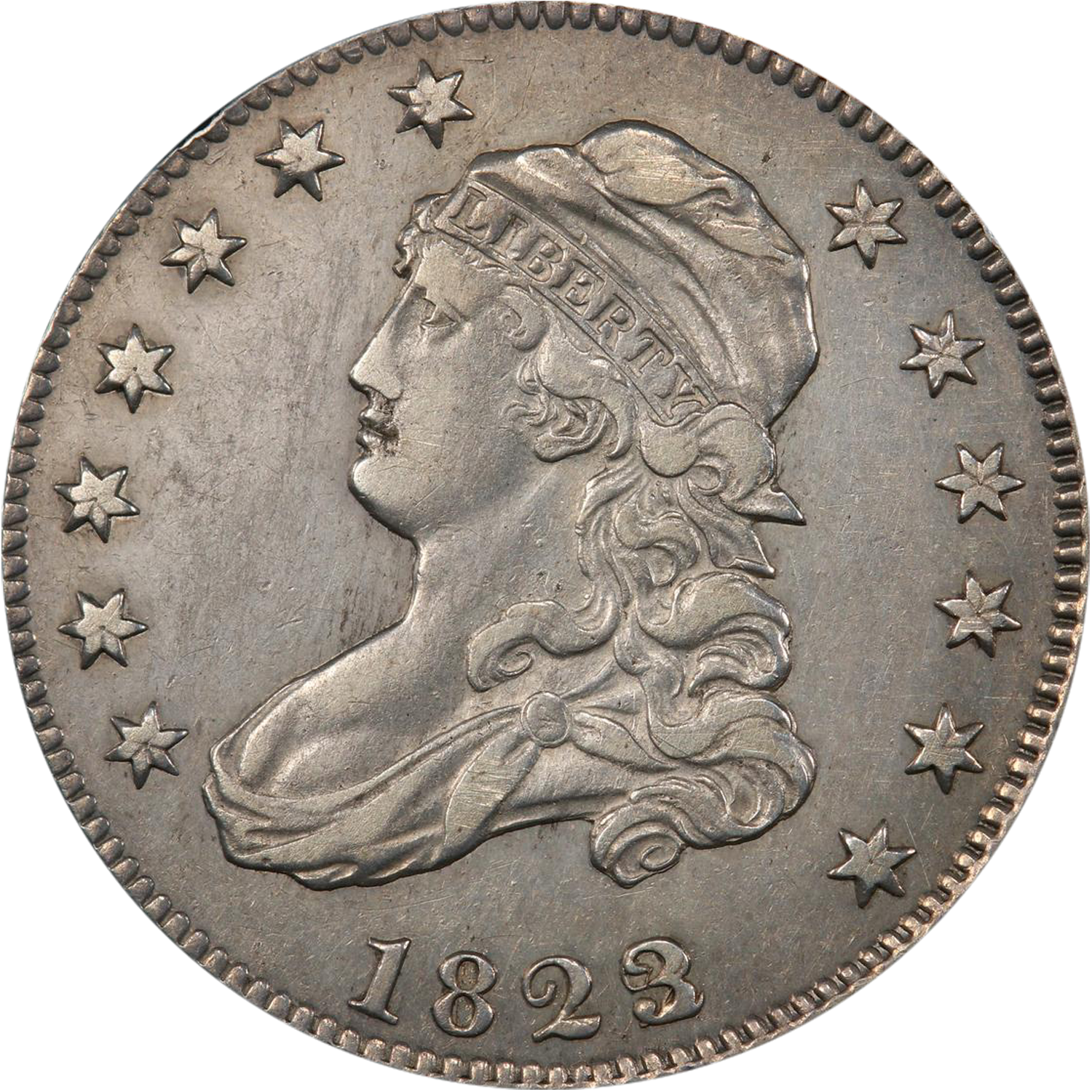 PCGS EF-45 Sold for $102,000 View Lot 443 | 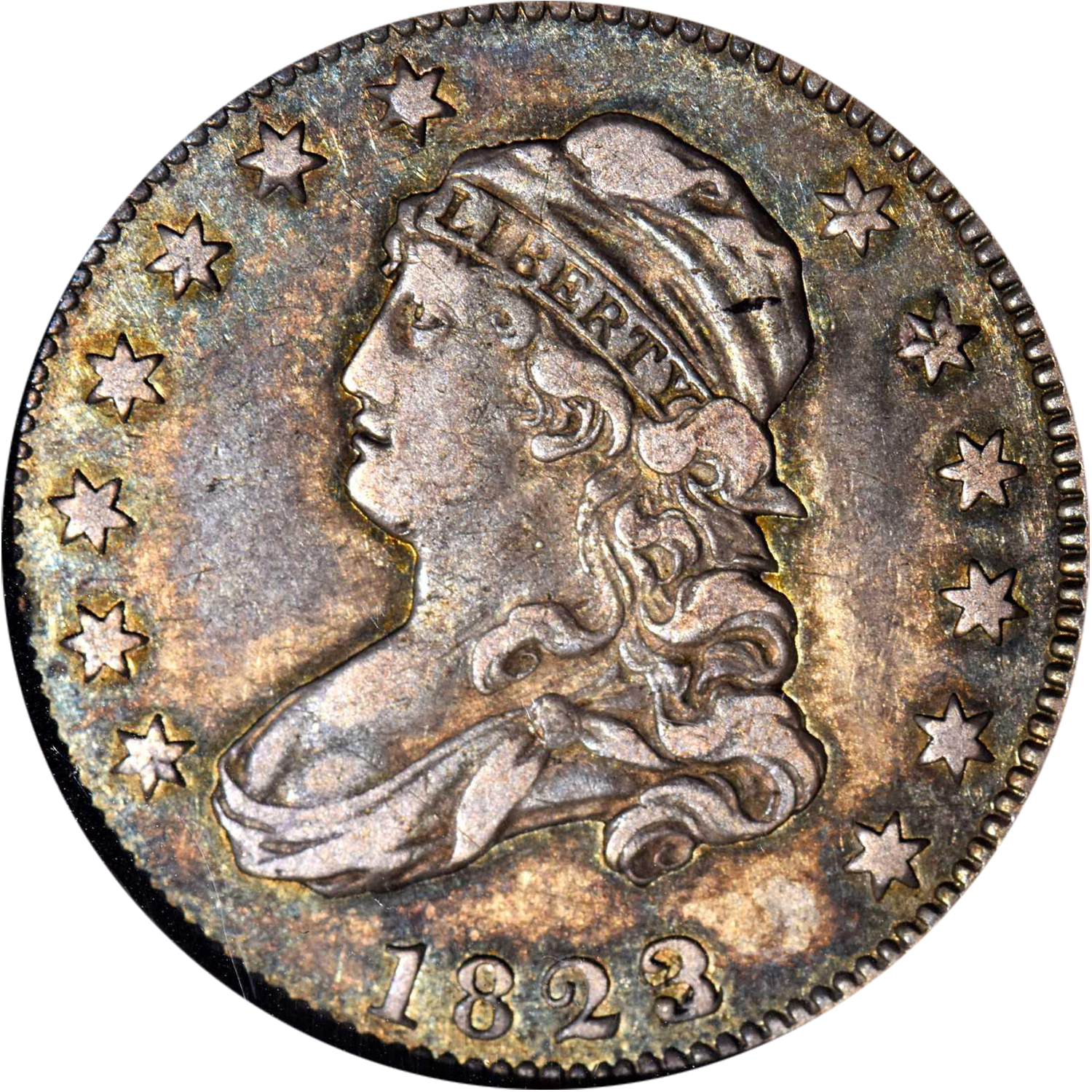 NGC AU-50 Sold for $96,000 View Lot 4062 |
